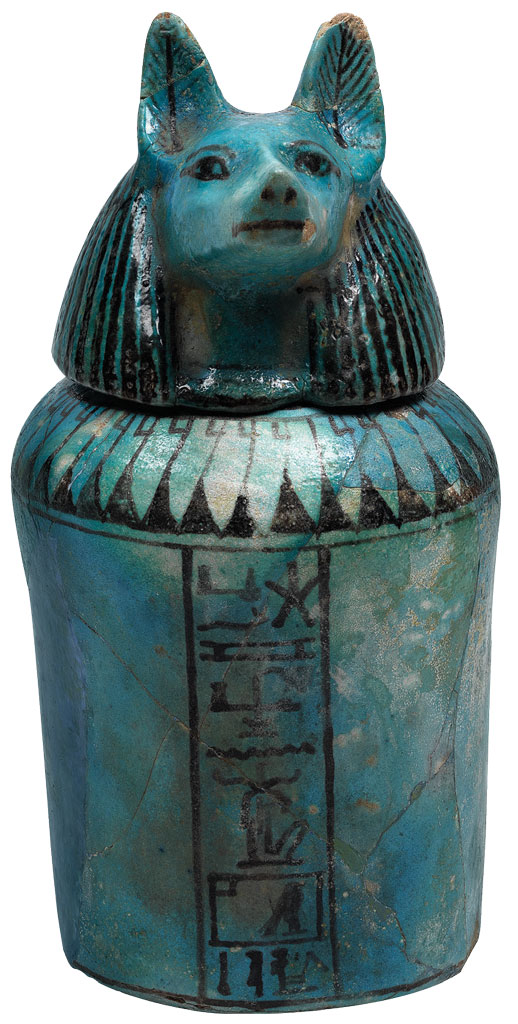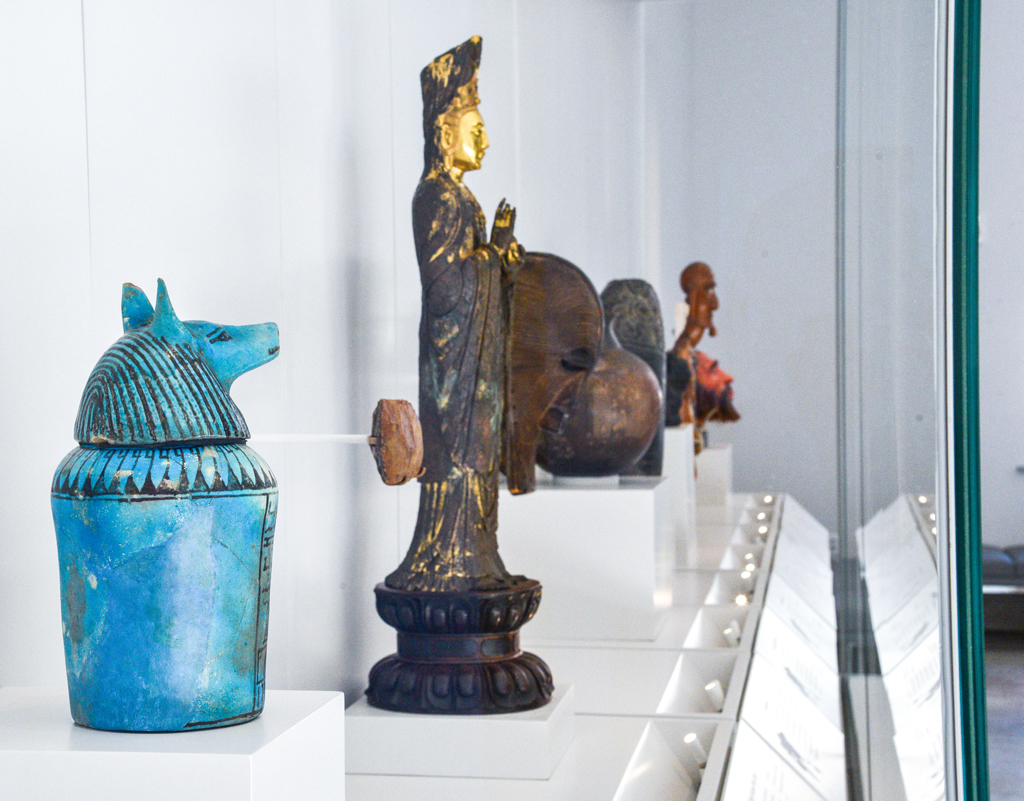
Artifacts from Around the World
Welcome to the New Sphinx Gallery
By: Jane Hickman and Penn Museum Curators and Keepers
When you walk into the Penn Museum’s new Main Entrance, the first thing you will see is the colossal Sphinx of Ramses II, the largest Egyptian Sphinx in the Western Hemisphere and the fourth largest outside of Egypt. Behind this magnificent 12 ½-ton red granite Sphinx is a long case of artifacts that represent diverse cultures of the ancient and modern world.
The ten artifacts described on the following pages and displayed in our new Sphinx Gallery reflect the breadth and depth of the Penn Museum’s current collection. Each piece was selected by a curator or keeper working within a specific section of the Museum. With nearly one million objects in our care, it was important that each object chosen embody qualities that showcase the creativity of people throughout the world. Alongside the Sphinx, these ten objects welcome visitors to the Museum. We encourage you to read about these artifacts from around the world, then visit the Museum to see them for yourself.
From the Egyptian Collection
Ancient Egyptian burials often included a set of four mummified organs essential for the afterlife. Stored in an individual canopic jar, each organ had a protective deity. This container once held the stomach of Hathor, a temple singer. Its hieroglyphic text and lid identify the protector deity as Duamutef, a son of Horus. The jar was excavated and exported following Egyptian law in 1921.
What is a Sphinx?
Egyptian sphinxes usually have the body of a lion and the head of a human, combining the traits of physical prowess and intellect. The head is often that of the king, although sphinxes of queens also exist. Statues of sphinxes appear early in Egyptian history and remain an important royal and divine symbol throughout the 3,000 years of pharaonic rule.
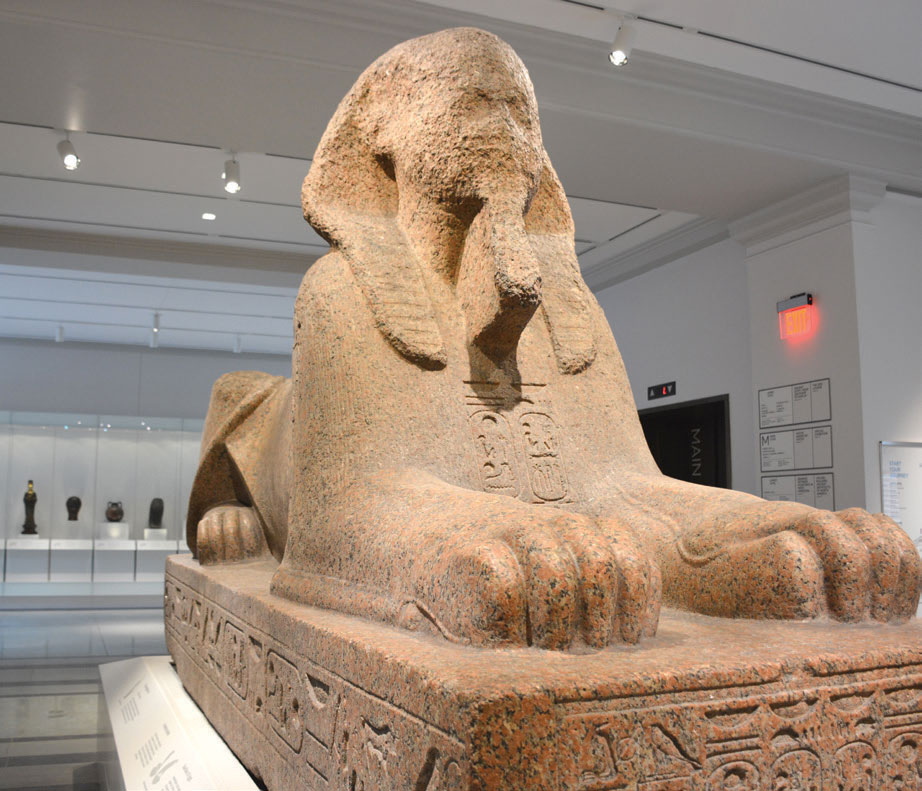
1279–1213 BCE
New Kingdom, 19th Dynasty
Memphis, Egypt
PM object E12326
From the European Archaeology Collection
This axe represents one of humanity’s fundamental transitions: in the Neolithic Period, many communities stopped hunting and gathering and became settled farmers. Chipped out of flint with great skill, axes like this one were made to cut down forests—making way for the first farms. This object was donated to the Museum in 1890, a time when Americans traveled abroad and collected ancient artifacts.
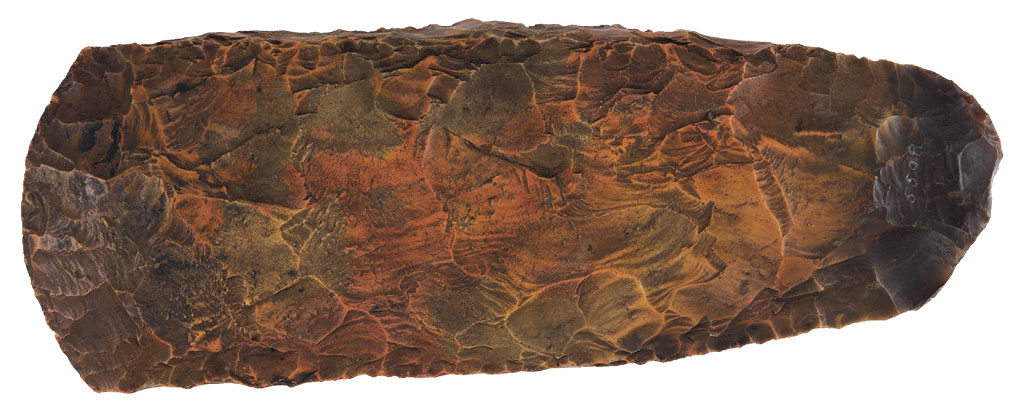
Flint
3900–1700 BCE
Denmark, Lolland-Falster
Length 23 cm, PM object 5508
From the Asian Collection
Guanyin (Perceiver of the World’s Cries) is a Buddhist divinity, the subject of popular devotion and miracle tales in East Asia, as well as the Chinese translations of Indian scriptures. This gilt-bronze image, purchased in 1921, shows Guanyin wrapped in a robe drawn up over a high crown, in which is embedded an image of the Buddha Amitābha.

Gilt Bronze
10th-11th century CE (Liao Dynasty)
China, Liaoning Province, Liaoyang
Height 70cm, PM object C400
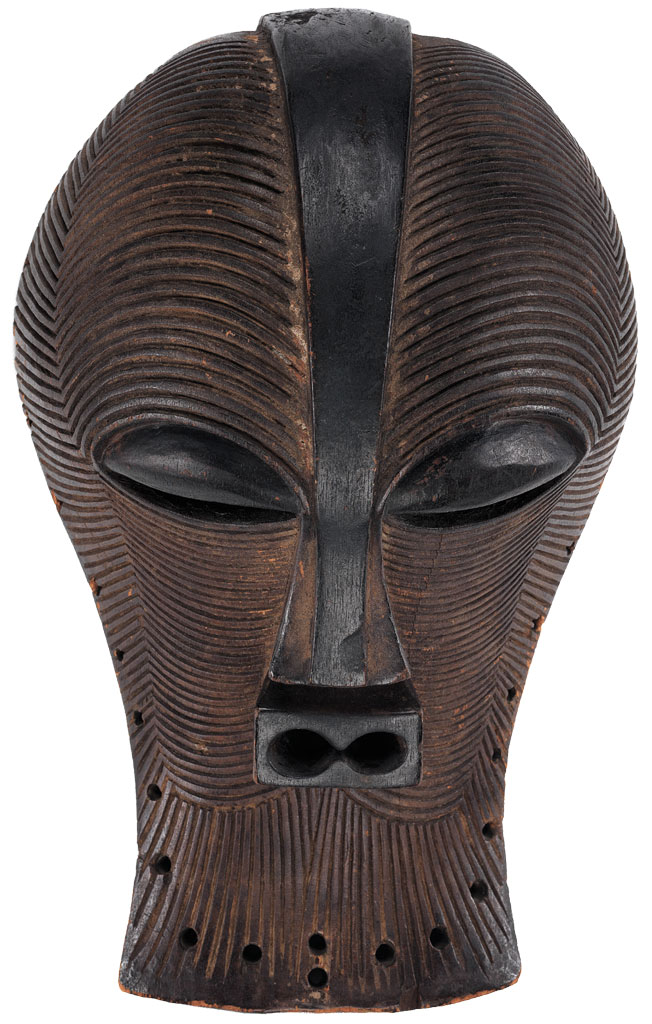
Unidentified Songye artist
Wood, Pigment
Late 19th–early 20th century Democratic Republic of the Congo
Height 37.5 cm, PM object AF5115
From the African Collection
A Songye community produced this mask for the Bwadi bwa kifwebe, a powerful men’s association which used it to reinforce societal laws and appeal to benevolent spirits. Purchased in 1919 from a Paris dealer, this mask is one of the Museum’s best-known objects and has been frequently published and displayed around the world.
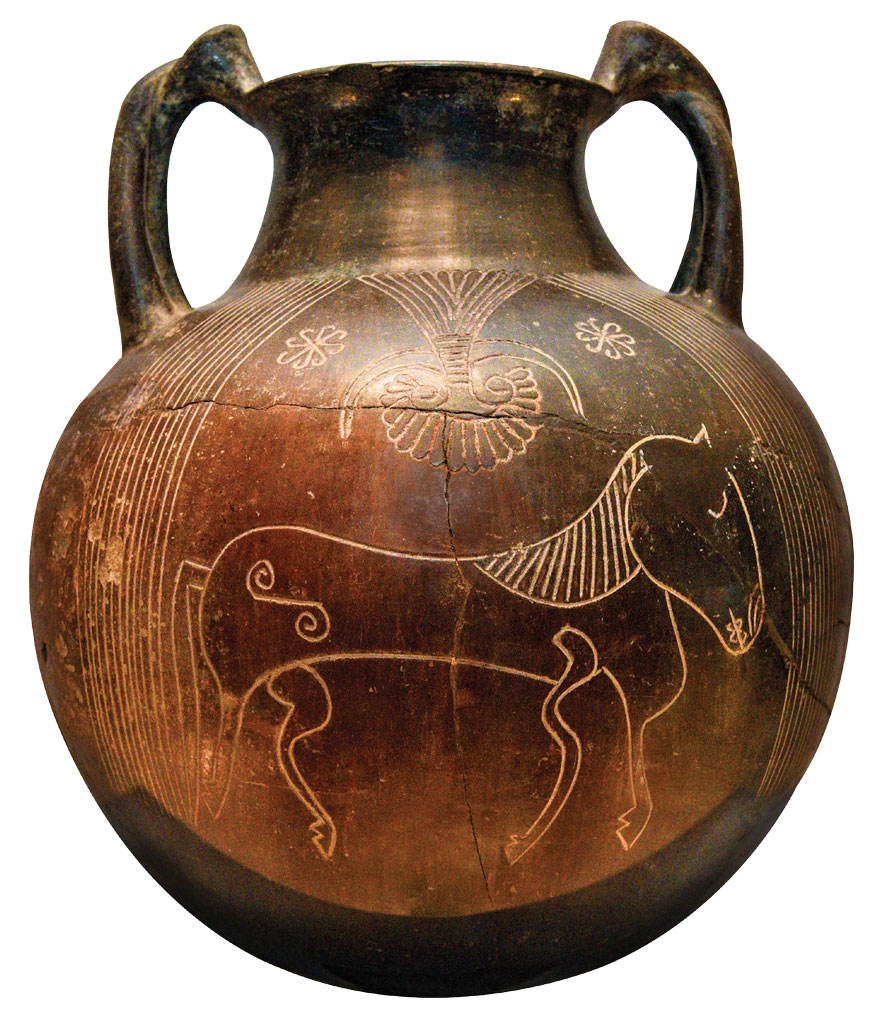
Ceramic
Late 7th century BCE
Italy, Narce (Tomb 64B)
Height 34.3 cm, PM object MS935
From the Mediterranean Collection
Excavated in a rich tomb of the Faliscans, who were neighbors of the Etruscans, this vessel signifies a nobleman’s status as a horse breeder. Expensive to keep, horses symbolized the ruling class and its control of land. Following legal excavation, the tomb contents were exported to Philadelphia in 1896. This amphora continues to yield information on society and technology in pre-Roman Italy.
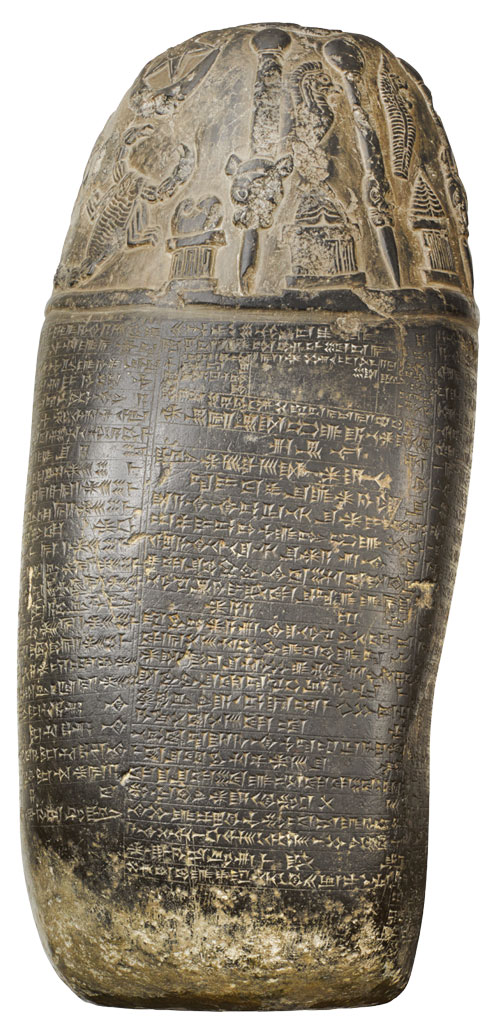
Diorite
ca. 1109 BCE
Iraq, Nippur (Temple of Enlil)
Height 49.5 cm, PM object 29-20-1
From the Near East Collection
This boundary stone (kudurru in Akkadian) commemorates a land grant from Nebuchadnezzar I, king of Babylonia, to the priest Nuska-ibni around 1109 BCE. Symbols of various Babylonian gods at the top provide divine authority, and much of the inscription curses anyone who violates its terms. It was excavated by Penn’s pioneering archaeological project in Iraq in 1896.
From the American Collection
This carved and polished black stone object is a ritual mortar. Its shape represents a fierce feline, probably a jaguar, baring its canines. Chavín shamans or priests likely used it, along with a stone pestle, to prepare hallucinogenic snuff for religious ceremonies. Purchased in 1925, its precise place of origin is uncertain.
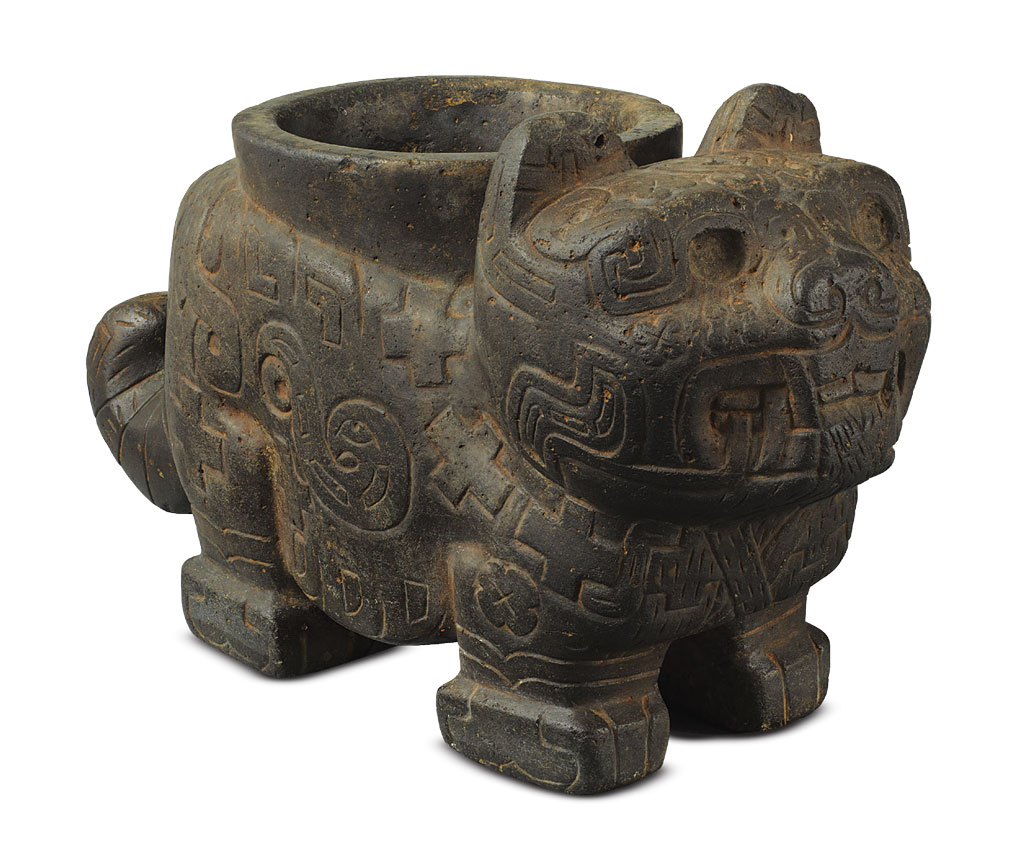
Stone
800 BCE–1 CE
Peru
Height 18.5 cm, PM object SA4627
From the Oceanian Collection
Early Western visitors to Easter Island observed ribbed figures hanging around the necks of men on ritual occasions, possibly to invoke the spirits of ancestors. Their emaciated appearance may refer to periods of environmental crisis on the island. This contemporary version, by Rapa Nui master carver Benedicto Tuki Pate, is unusually large and of non-native wood, but otherwise entirely traditional. Gift of Robert and Marilyn Forney.

Made by artist Benedicto Tuki Pate
Wood, Bone, Obsidian
2003
Easter Island (Rapa Nui)
Height 71.6 cm, PM object 2015-13-4
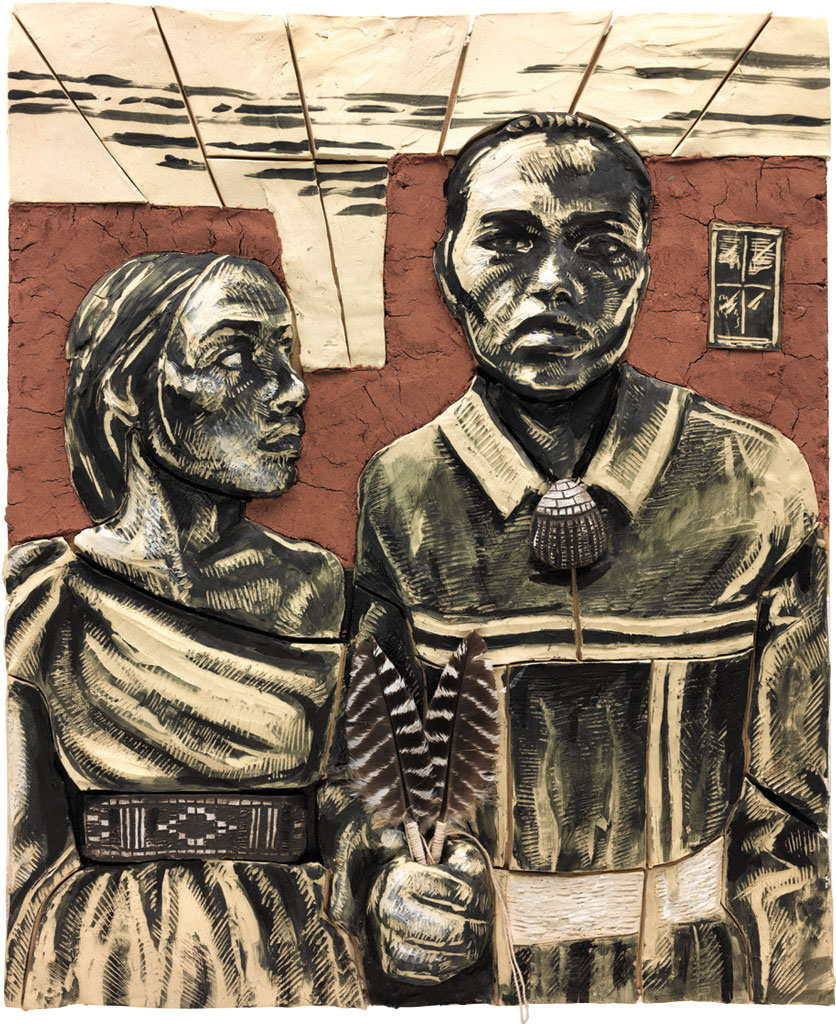
Made by artist Rose Bean Simpson [b. 1983]
Clay, Wood, Goose Feather, Cotton
2012
United States, New Mexico, Santa Clara Pueblo
Height 47.3 cm, PM object 2015-25-1
From the American Collection
The artist’s Native American upbringing instructs her to live as a “whole-person” in balance with powaha-forces of nature that create both masculinity and femininity within each individual. Playing on the iconic American painting, Simpson’s male and female selves wear traditional Pueblo garments. Her male force holds striped goose feathers—an act of prayer that references her two-spirit identity. Purchased by the Museum in 2015.
From the Physical Anthropology Collection
The “Old Man” of Shanidar, buried nearly 60,000 years ago, was likely blind in one eye and had lost an arm at the elbow long before his death. Despite this, he lived 50 years or more, surely with support of others. His head is reconstructed on a cast of his skull using modern forensic techniques.
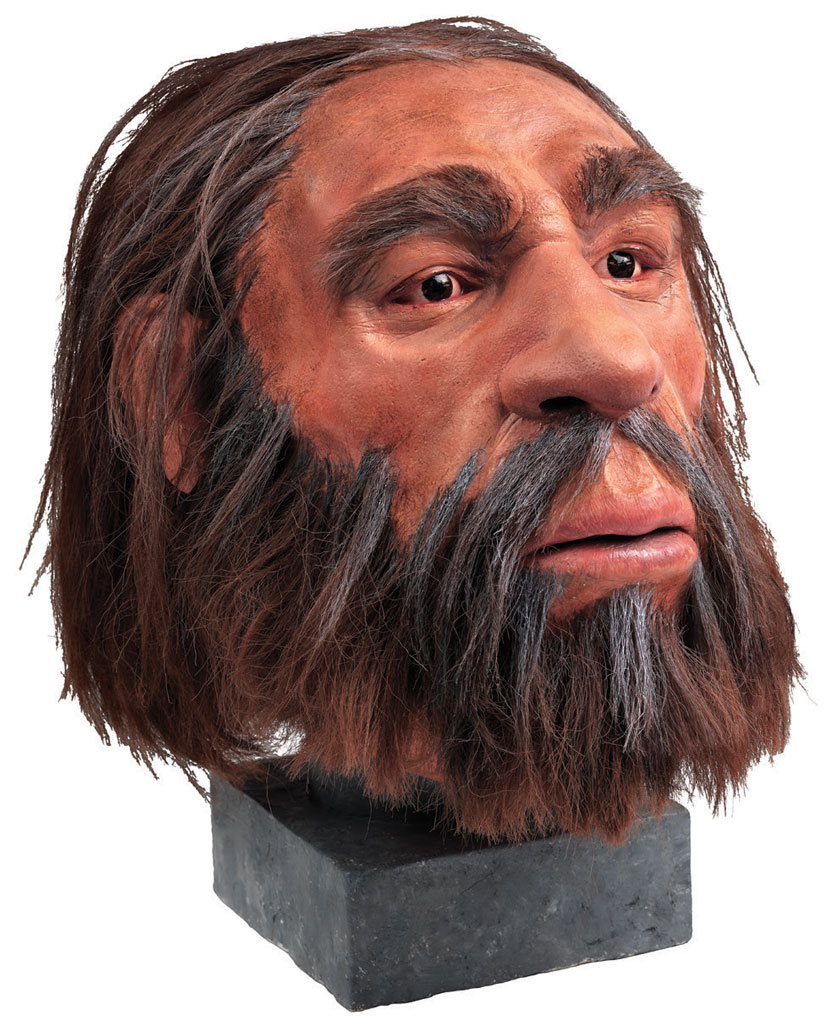
Made by artist Kathleen Gallo, 2019
Silicone, Epoxy, Plaster, Plasticine, Faux Hair
60,000–45,000 BCE
Iraq, Shanidar Cave
Life size, PM object EP-2019-4-1
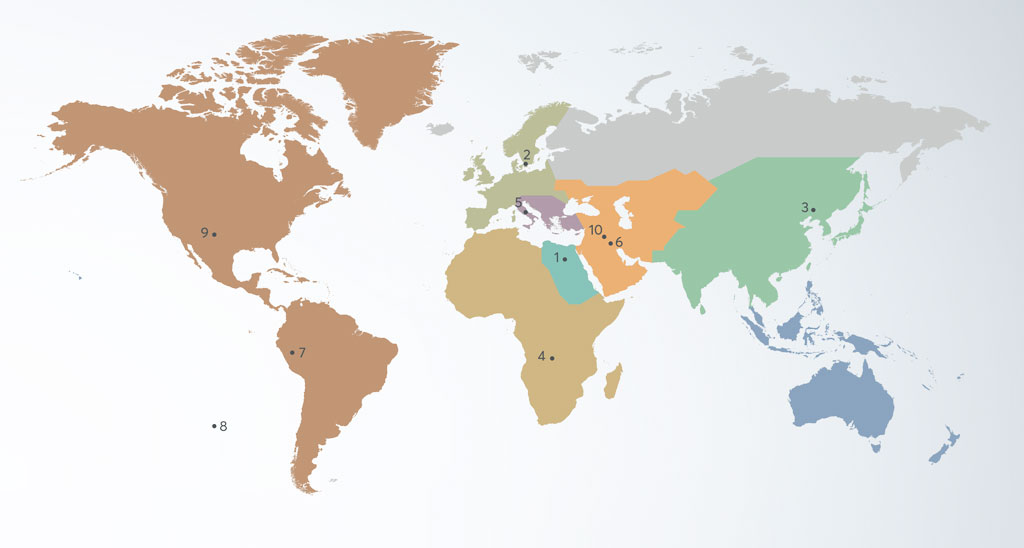
- Canopic Jar and Lid
- Stone Axe
- Statue of Guanyin, Khitan Culture
- Kifwebe Mask
- Amphora (Jar with Two Handles)
- Kudurru (Boundary Stone)
- Effigy Vessel, Chavín Culture
- Moai Kavakava (Ribbed Figure)
- Self Portrait, “American Gothic”
- Neandertal Head (Reconstruction)
EDITOR’S NOTE:
The preparation of this article benefited from the assistance of Executive Director of Galleries Dan Rahimi, Special Projects Manager Bob Thurlow, Associate Editor Christina Griffith, and Penn Museum Summer Intern Alioune Diack.

